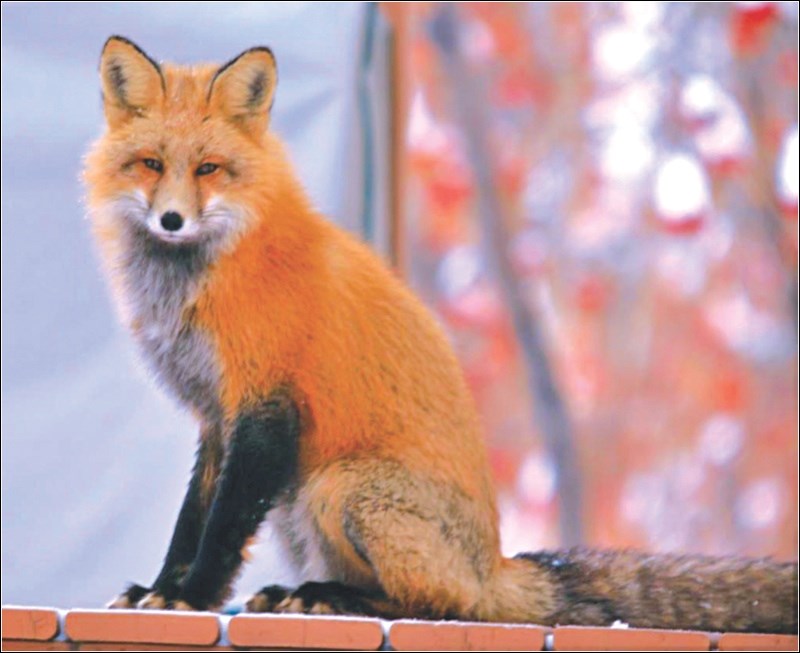At this moment outside your Flin Flon home, in your own backyard, at our local park and on city streets, animals are doing something incredibly interesting and wholly unexpected.
Canada geese are inhabiting our baseball diamonds, seagulls are landing on parked cars, ravens are eating donuts – and foxes are practising synurbia.
Synurbization is defined by zoology professor Maciej Luniak as an “adaptation of a wildlife species population to changes in the environment caused by human (i.e. anthropogenic) factors.”
Urban development tends to destroy natural habitat, but it also creates new ecological habitats that expand hastily. According to Luniak, these expanding habitats attract more animals, and some species are able to overcome the ecological barriers created by urbanization, adapting successfully to conditions provided by the new habitat.
These adaptations to urban habitats cause changes in behaviour and the ecology of synurbic populations.
The red fox (Vulpes vulpes) is an ideal example of a synurbic species that has successfully adapted to the habitats created in urban areas.
Luniak defines red foxes as one of the best-studied synurbic species. Foxes are now indicators of the most characteristic adjustments of synurbic populations. Adjustments include changes in migratory behaviour, habitats, feeding and tameness towards people.
Although red foxes have the tendency of avoiding the direct presence of humans, some foxes have lived in our urban areas for an interminable period of time.
Foxes now show reduced migratory behaviour because of the advantages of milder urban microclimate, snow-free spaces, warm and well-sheltered areas and the abundant resources of anthropogenic foods provided by the feeding public.
Warm and well-sheltered areas, such as spaces under stairs or decks, provide a cozy living area for foxes.
Urban areas additionally offer profuse amounts of food, which other mammal species find attractive.
In an article in the Journal of Animal Ecology, S. Harris and J.M.V. Rayner established that food directly and indirectly provided by people can become the main component of a fox’s diet. Moreover, foxes become well-adjusted to human customs with an aim at finding or receiving human food.
Interactions with foxes by humans are usually innocent and well-intentioned. With the rise of population in urban areas, there is more temptation to try to pet or feed foxes.
Some interactions have resulted in injuries for both parties. Getting close to these animals can alter their natural behaviour, resulting in aggressiveness and conflict between wildlife and humans, or enabling them to lose their natural fear of humans.
Foxes and other wild animals have developed to eat natural foods from their environment to maintain good health. Human food does not carry the proper nutritional values foxes need. By feeding off scraps of garbage, we create risks for the foxes to eat dangerous waste items such as plastic or glass.
People tend to feel of two minds about urban foxes: Either they are enchanted by this wild carnivore near their homes, or they are afraid of it because of the possibility of diseases.
Foxes are known for diseases they carry including rabies and toxocarisis (roundworm). Both of these diseases can be transferred to domestic animals such as dogs or cats.
As a potential graduate of the Natural Resources Management Technology program, I find these species’ interactions with the environment suggest new ways to study and think about the near-at-hand creatures, their behaviours and their activities that are often overlooked.
Each species I have been asked to research throughout this program offers new mysteries to decode.
What I have come to learn is that nature works out arrangements the likes of which none of us can imagine. When we feed or interact with these beautiful creatures, we are innocently, but unknowingly, robbing foxes of their most important skill – the ability to survive on their own.
I chose to become a wildlife technician because I very much care about healthy, diverse wildlife populations. Moreover, I chose to write about synurbia as I now feel an obligation to others to explain why we all must help conserve wildlife in ways that may be unclear or apparently objectionable.
In sum, the future of wildlife depends on wild places that support diverse, healthy, sustainable populations of sizes comparable with human interests and desires.
There is no shortcut in providing for this habitat. Synurbia may be temporary and feeding foxes will inevitably lead to more problems and, ultimately, less wildlife.
Flin Flon native Brianna Parthenay is a wildlife management student at the Natural Resources Manage-ment Technology Program at University College of the North in The Pas.




